Inhalt
Dragonflies lived with the dinosaurs!
 Please visit our website, www.garethstevens.com. For a free color catalog of all our high-quality books, call toll free 1-800-542-2595 or fax 1-877-542-2596.Cataloging-in-Publication Data
Please visit our website, www.garethstevens.com. For a free color catalog of all our high-quality books, call toll free 1-800-542-2595 or fax 1-877-542-2596.Cataloging-in-Publication Data Names: Harasymiw, Mark. Title: Dragonflies lived with the dinosaurs! / Mark Harasymiw. Description: New York : Gareth Stevens Publishing, 2017. | Series: Living with the dinosaurs | Includes index. Identifiers: ISBN 9781482456493 (pbk.) | ISBN 9781482456516 (library bound) | ISBN 9781482456509 (6 pack) Subjects: LCSH: Dragonflies--Juvenile literature.
Classification: LCC QL520.H37 2017 | DDC 595.733--dc23 First Edition Published in 2017 by Gareth Stevens Publishing 111 East 14th Street, Suite 349 New York, NY 10003 Copyright 2017 Gareth Stevens Publishing Designer: Laura Bowen Editor: Therese Shea Photo credits: Cover, p.. All rights reserved. No part of this book may be reproduced in any form without permission in writing from the publisher, except by a reviewer. Printed in the United States of America CPSIA compliance information: Batch #CW17GS: For further information contact Gareth Stevens, New York, New York at 1-800-542-2595. CONTENTS Words in the glossary appear in bold type the first time they are used in the text. AS BIG AS BIRDS! Imagine an was as big as a seagulls, about 30 inches (76 cm) wide! Scientists have many interesting ideas about how Earth became home to such large insects.
Read on to find out more about Meganeura and ancient dragonflies. 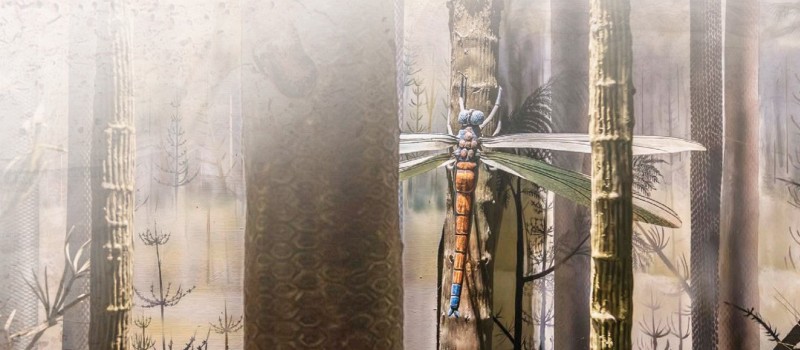
 MEGANEURA PROBABLY SNACKED ON OTHER INSECTS, BUT MAY HAVE EATEN SMALL LIZARDS AND OTHER CREATURES, TOO. AIR SUPPLY Scientists think there was more of the gas called oxygen in the air during the Carboniferous period. While air we breathe today holds about 21 percent oxygen, air back then probably had close to 35 percent oxygen. This would have greatly affected insects. An insect doesnt have lungs.
MEGANEURA PROBABLY SNACKED ON OTHER INSECTS, BUT MAY HAVE EATEN SMALL LIZARDS AND OTHER CREATURES, TOO. AIR SUPPLY Scientists think there was more of the gas called oxygen in the air during the Carboniferous period. While air we breathe today holds about 21 percent oxygen, air back then probably had close to 35 percent oxygen. This would have greatly affected insects. An insect doesnt have lungs.
It takes in oxygen through holes in its body, but less oxygen than an animal with lungs. However, more oxygen in the air during the Carboniferous period meant insects breathed more in. This allowed them to grow larger!  THE PREHISTORIC WORLD The centipede-like Arthropleura (ahr-thruh-PLUR-uh) lived during the Carboniferous period. It was more than 8 feet (2.4 m) long!
THE PREHISTORIC WORLD The centipede-like Arthropleura (ahr-thruh-PLUR-uh) lived during the Carboniferous period. It was more than 8 feet (2.4 m) long!  THIS IS A MUSEUMS IDEA OF WHAT A FOREST MIGHT HAVE LOOKED LIKE DURING THE CARBONIFEROUS PERIOD. MEGANEURA LIVED IN FORESTED AREAS WITH LOTS OF WATER. RULERS OF THE AIR During the Carboniferous period, there were no big flying predators to eat insects like Meganeura, such as birds of prey or flying .
THIS IS A MUSEUMS IDEA OF WHAT A FOREST MIGHT HAVE LOOKED LIKE DURING THE CARBONIFEROUS PERIOD. MEGANEURA LIVED IN FORESTED AREAS WITH LOTS OF WATER. RULERS OF THE AIR During the Carboniferous period, there were no big flying predators to eat insects like Meganeura, such as birds of prey or flying .
In fact, Meganeura was the largest predator in the skies. It ate other bugs, some quite large. Scientists believe that Meganeura became extinct, or died out, when oxygen levels began falling over time. However, Meganeuras dragonfly relatives did survive. These were the dragonflies that lived with the dinosaursand outlived them!  THE PREHISTORIC WORLD Meganeura have been found in North America, Europe, Russia, and Australia.
THE PREHISTORIC WORLD Meganeura have been found in North America, Europe, Russia, and Australia.  THIS MODEL OF MEGANEURA STANDING ON A LOG SHOWS HOW BIG IT REALLY WAS.
THIS MODEL OF MEGANEURA STANDING ON A LOG SHOWS HOW BIG IT REALLY WAS.
NOT ALL ENORMOUS Not all prehistoric dragonflies were huge like Meganeura. Some were the same size as todays dragonflies. The earliest fossils thought to be true dragonflies, most similar to the ones we see now, date back 250 million years ago. Scientists guess what they were like by studying fossils and todays dragonflies. Dragonflies have a long, thin body and two pairs of transparent, or see-through, wings. 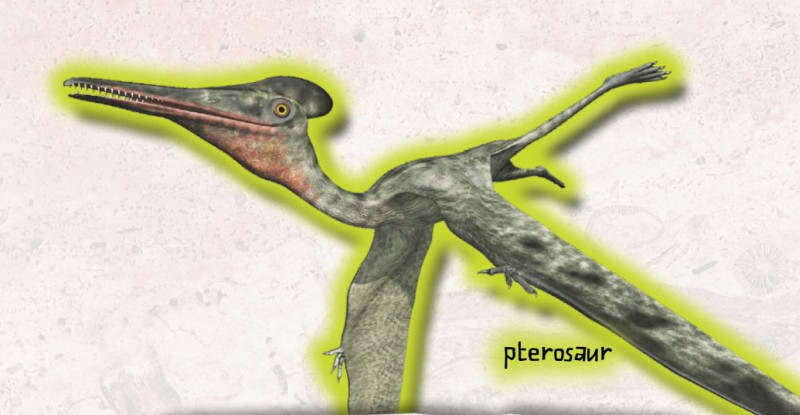 THE PREHISTORIC WORLD Pterosaurs were flying reptiles that existed 250 million years ago.
THE PREHISTORIC WORLD Pterosaurs were flying reptiles that existed 250 million years ago.  THE PREHISTORIC WORLD Pterosaurs were flying reptiles that existed 250 million years ago.
THE PREHISTORIC WORLD Pterosaurs were flying reptiles that existed 250 million years ago.
Some grew as large as fighter jets! They probably ate dragonflies. 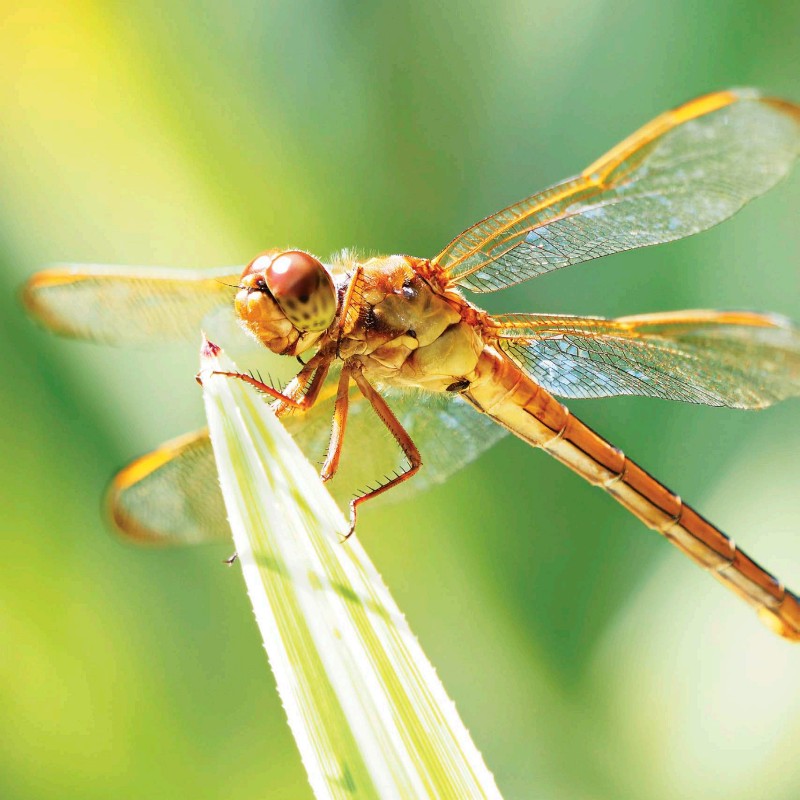 TODAY, DRAGONFLIES CAN BE FOUND ON EVERY EXCEPT ANTARCTICA. DRAGONFLY LARVAE Dragonflies hatch, or come out, from eggs that were laid in or near freshwater ponds and streams. After they hatch, theyre called larvae, nymphs, or naiads. Their shape can be different, depending on their . Dragonfly larvaes coloring is usually dull and matches plants, dirt, and rocks in their watery home.
TODAY, DRAGONFLIES CAN BE FOUND ON EVERY EXCEPT ANTARCTICA. DRAGONFLY LARVAE Dragonflies hatch, or come out, from eggs that were laid in or near freshwater ponds and streams. After they hatch, theyre called larvae, nymphs, or naiads. Their shape can be different, depending on their . Dragonfly larvaes coloring is usually dull and matches plants, dirt, and rocks in their watery home.
This helps them hide from predators, including fish, frogs, and other dragonfly larvae. Their coloring also helps them hide when they hunt food, such as worms, tadpoles, and small fish. THE PREHISTORIC WORLD Prehistoric dragonfly larvae could have been as big as a frog! 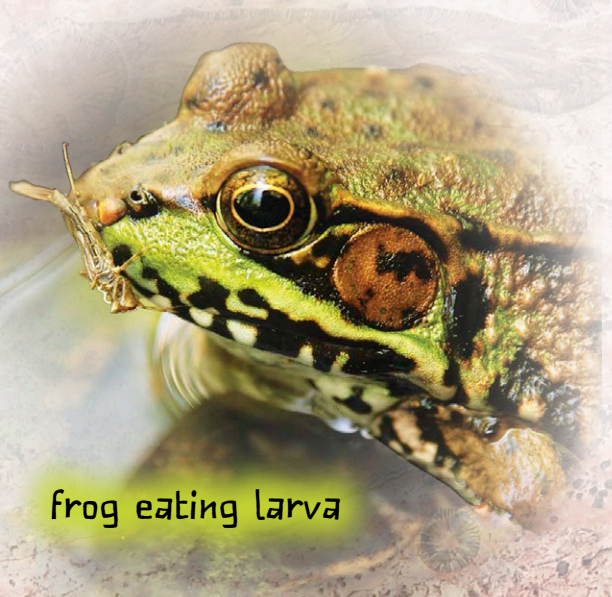
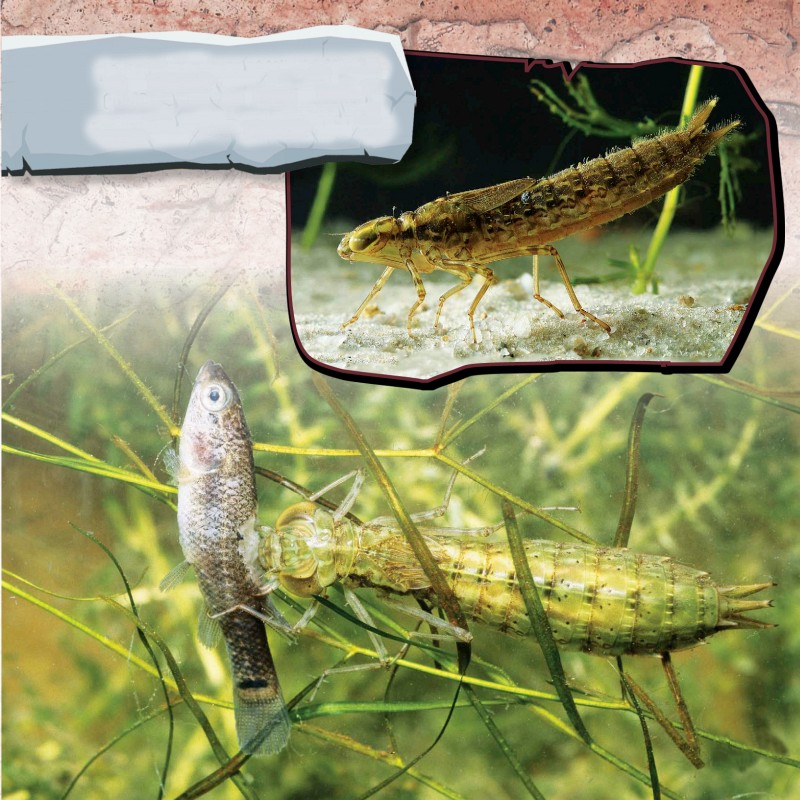 DO YOU SEE THE DRAGONFLY LARVAES COLORS? THESE HELP THEM BLEND IN WITH PLANTS, SAND, MUD, AND STICKS. DRAGONFLY ADULTS As dragonfly larvae grow, they many times, becoming larger and more like adults with each molt. Their wings first appear halfway through their molts. It may take a few weeks to 8 years for a dragonfly to reach adulthood.
DO YOU SEE THE DRAGONFLY LARVAES COLORS? THESE HELP THEM BLEND IN WITH PLANTS, SAND, MUD, AND STICKS. DRAGONFLY ADULTS As dragonfly larvae grow, they many times, becoming larger and more like adults with each molt. Their wings first appear halfway through their molts. It may take a few weeks to 8 years for a dragonfly to reach adulthood.
It depends on the species, or kind. After its last molt, it waits for its wings to straighten and its body to harden. When thats done, the dragonfly flies away, already on the hunt for food! 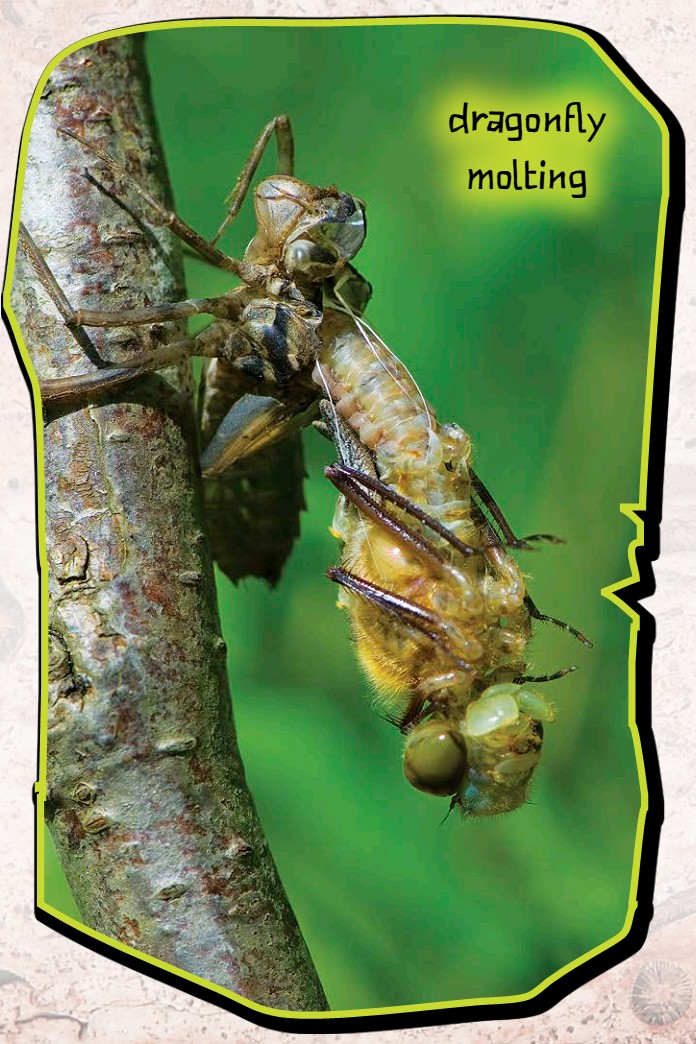
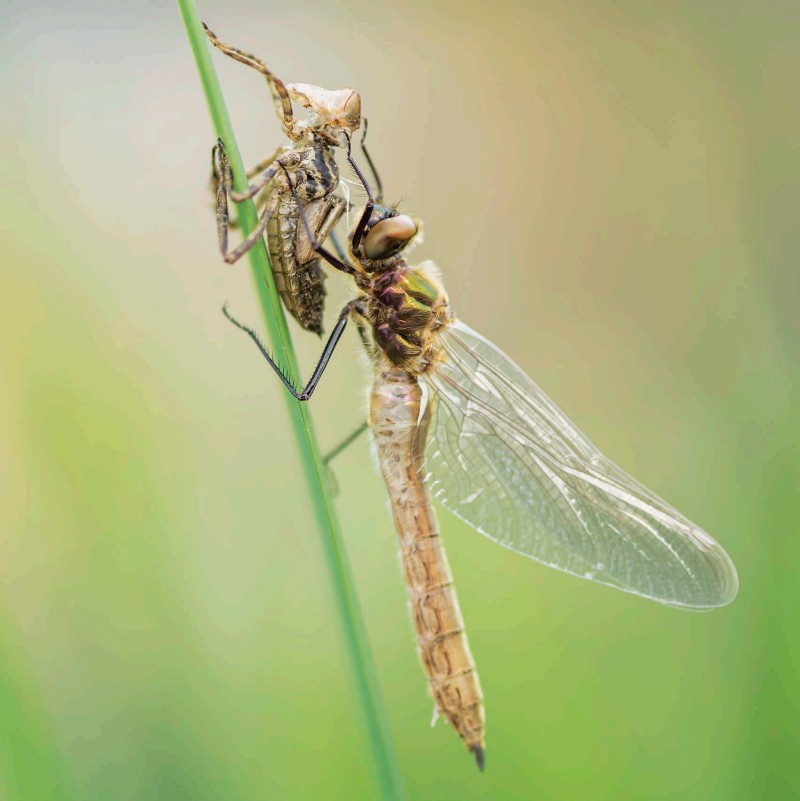 THIS DRAGONFLY, CALLED A DOWNY EMERALD, HAS JUST SHED ITS OLD SKIN AFTER MOLTING. AWESOME ADAPTATION Todays dragonflies have great agility in air, even on their first flight. This means they can move quickly and easily. Their favorite meals are small flying insects, such as flies.
THIS DRAGONFLY, CALLED A DOWNY EMERALD, HAS JUST SHED ITS OLD SKIN AFTER MOLTING. AWESOME ADAPTATION Todays dragonflies have great agility in air, even on their first flight. This means they can move quickly and easily. Their favorite meals are small flying insects, such as flies.
They catch them in midair! Dragonflies agility means they dont have many predators to worry about. There are only a few birds fast enough to catch them, including falcons and bee-eaters. Dragonfly speed was an that probably helped them survive being eaten into extinction by dinosaurs, flying reptiles, and other prehistoric creatures! 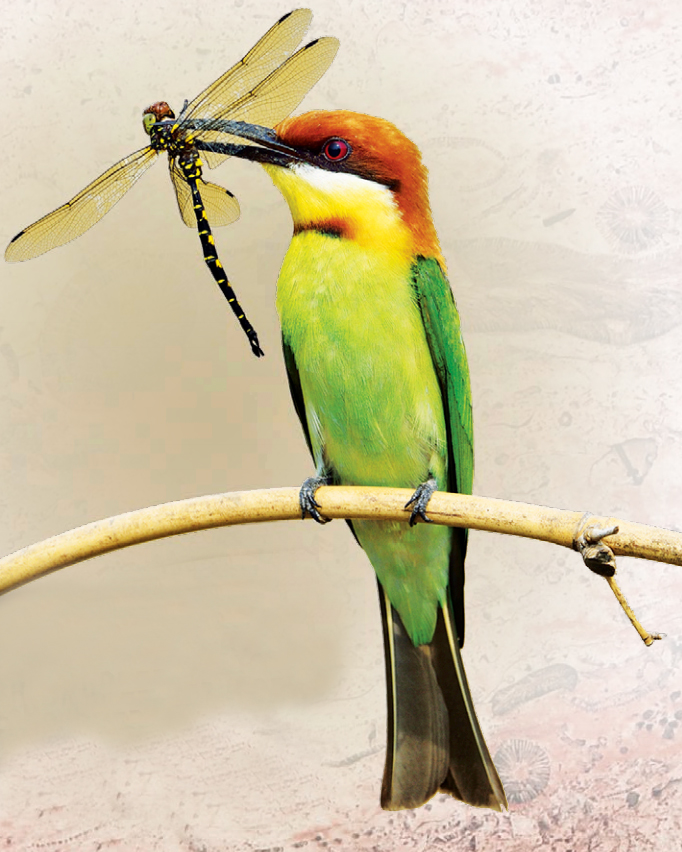


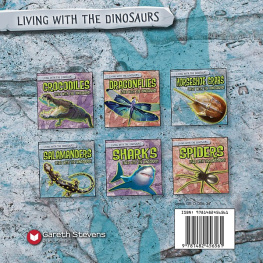
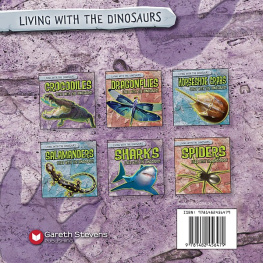
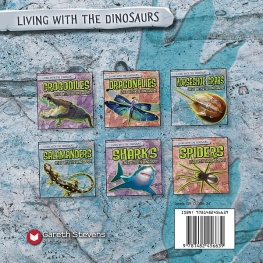
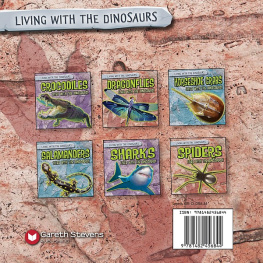
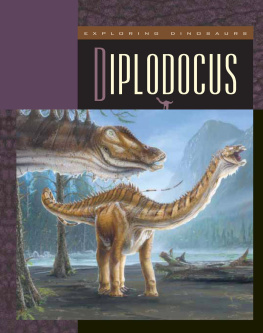

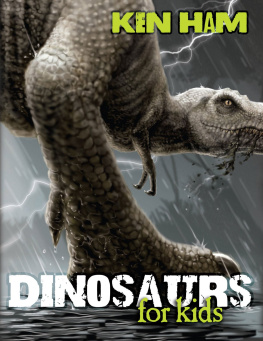
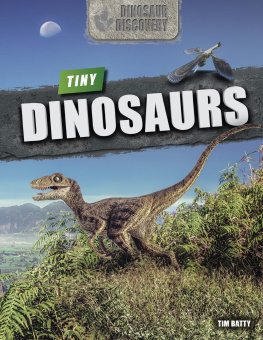
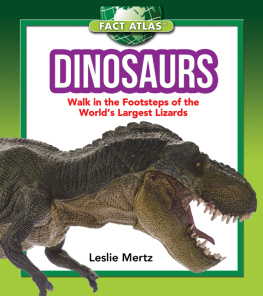
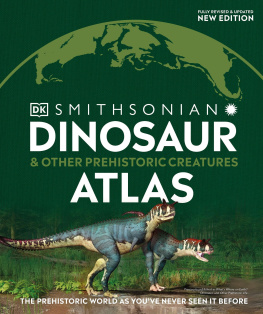
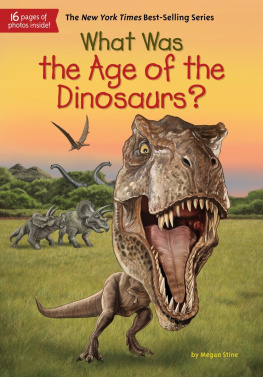
 Please visit our website, www.garethstevens.com. For a free color catalog of all our high-quality books, call toll free 1-800-542-2595 or fax 1-877-542-2596.Cataloging-in-Publication Data Names: Harasymiw, Mark. Title: Dragonflies lived with the dinosaurs! / Mark Harasymiw. Description: New York : Gareth Stevens Publishing, 2017. | Series: Living with the dinosaurs | Includes index. Identifiers: ISBN 9781482456493 (pbk.) | ISBN 9781482456516 (library bound) | ISBN 9781482456509 (6 pack) Subjects: LCSH: Dragonflies--Juvenile literature.
Please visit our website, www.garethstevens.com. For a free color catalog of all our high-quality books, call toll free 1-800-542-2595 or fax 1-877-542-2596.Cataloging-in-Publication Data Names: Harasymiw, Mark. Title: Dragonflies lived with the dinosaurs! / Mark Harasymiw. Description: New York : Gareth Stevens Publishing, 2017. | Series: Living with the dinosaurs | Includes index. Identifiers: ISBN 9781482456493 (pbk.) | ISBN 9781482456516 (library bound) | ISBN 9781482456509 (6 pack) Subjects: LCSH: Dragonflies--Juvenile literature. 
 MEGANEURA PROBABLY SNACKED ON OTHER INSECTS, BUT MAY HAVE EATEN SMALL LIZARDS AND OTHER CREATURES, TOO. AIR SUPPLY Scientists think there was more of the gas called oxygen in the air during the Carboniferous period. While air we breathe today holds about 21 percent oxygen, air back then probably had close to 35 percent oxygen. This would have greatly affected insects. An insect doesnt have lungs.
MEGANEURA PROBABLY SNACKED ON OTHER INSECTS, BUT MAY HAVE EATEN SMALL LIZARDS AND OTHER CREATURES, TOO. AIR SUPPLY Scientists think there was more of the gas called oxygen in the air during the Carboniferous period. While air we breathe today holds about 21 percent oxygen, air back then probably had close to 35 percent oxygen. This would have greatly affected insects. An insect doesnt have lungs. THE PREHISTORIC WORLD The centipede-like Arthropleura (ahr-thruh-PLUR-uh) lived during the Carboniferous period. It was more than 8 feet (2.4 m) long!
THE PREHISTORIC WORLD The centipede-like Arthropleura (ahr-thruh-PLUR-uh) lived during the Carboniferous period. It was more than 8 feet (2.4 m) long!  THIS IS A MUSEUMS IDEA OF WHAT A FOREST MIGHT HAVE LOOKED LIKE DURING THE CARBONIFEROUS PERIOD. MEGANEURA LIVED IN FORESTED AREAS WITH LOTS OF WATER. RULERS OF THE AIR During the Carboniferous period, there were no big flying predators to eat insects like Meganeura, such as birds of prey or flying .
THIS IS A MUSEUMS IDEA OF WHAT A FOREST MIGHT HAVE LOOKED LIKE DURING THE CARBONIFEROUS PERIOD. MEGANEURA LIVED IN FORESTED AREAS WITH LOTS OF WATER. RULERS OF THE AIR During the Carboniferous period, there were no big flying predators to eat insects like Meganeura, such as birds of prey or flying . THE PREHISTORIC WORLD Meganeura have been found in North America, Europe, Russia, and Australia.
THE PREHISTORIC WORLD Meganeura have been found in North America, Europe, Russia, and Australia.  THIS MODEL OF MEGANEURA STANDING ON A LOG SHOWS HOW BIG IT REALLY WAS.
THIS MODEL OF MEGANEURA STANDING ON A LOG SHOWS HOW BIG IT REALLY WAS. THE PREHISTORIC WORLD Pterosaurs were flying reptiles that existed 250 million years ago.
THE PREHISTORIC WORLD Pterosaurs were flying reptiles that existed 250 million years ago.  TODAY, DRAGONFLIES CAN BE FOUND ON EVERY EXCEPT ANTARCTICA. DRAGONFLY LARVAE Dragonflies hatch, or come out, from eggs that were laid in or near freshwater ponds and streams. After they hatch, theyre called larvae, nymphs, or naiads. Their shape can be different, depending on their . Dragonfly larvaes coloring is usually dull and matches plants, dirt, and rocks in their watery home.
TODAY, DRAGONFLIES CAN BE FOUND ON EVERY EXCEPT ANTARCTICA. DRAGONFLY LARVAE Dragonflies hatch, or come out, from eggs that were laid in or near freshwater ponds and streams. After they hatch, theyre called larvae, nymphs, or naiads. Their shape can be different, depending on their . Dragonfly larvaes coloring is usually dull and matches plants, dirt, and rocks in their watery home.
 DO YOU SEE THE DRAGONFLY LARVAES COLORS? THESE HELP THEM BLEND IN WITH PLANTS, SAND, MUD, AND STICKS. DRAGONFLY ADULTS As dragonfly larvae grow, they many times, becoming larger and more like adults with each molt. Their wings first appear halfway through their molts. It may take a few weeks to 8 years for a dragonfly to reach adulthood.
DO YOU SEE THE DRAGONFLY LARVAES COLORS? THESE HELP THEM BLEND IN WITH PLANTS, SAND, MUD, AND STICKS. DRAGONFLY ADULTS As dragonfly larvae grow, they many times, becoming larger and more like adults with each molt. Their wings first appear halfway through their molts. It may take a few weeks to 8 years for a dragonfly to reach adulthood.
 THIS DRAGONFLY, CALLED A DOWNY EMERALD, HAS JUST SHED ITS OLD SKIN AFTER MOLTING. AWESOME ADAPTATION Todays dragonflies have great agility in air, even on their first flight. This means they can move quickly and easily. Their favorite meals are small flying insects, such as flies.
THIS DRAGONFLY, CALLED A DOWNY EMERALD, HAS JUST SHED ITS OLD SKIN AFTER MOLTING. AWESOME ADAPTATION Todays dragonflies have great agility in air, even on their first flight. This means they can move quickly and easily. Their favorite meals are small flying insects, such as flies.